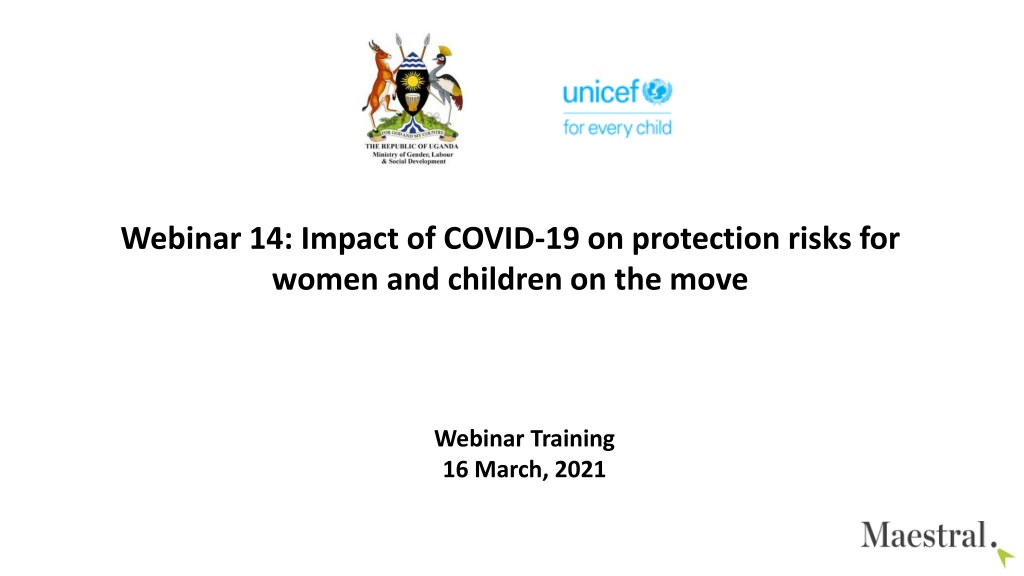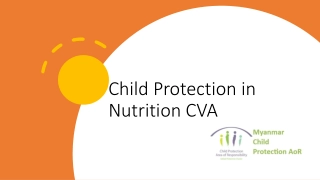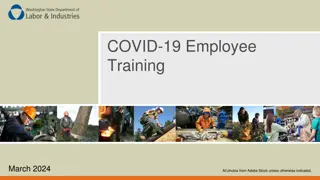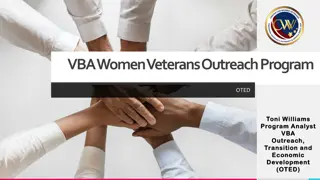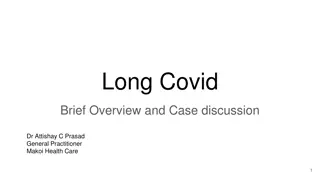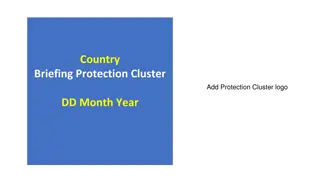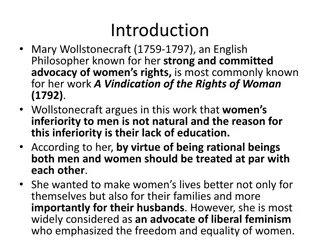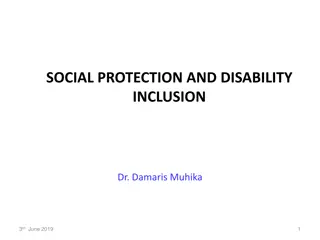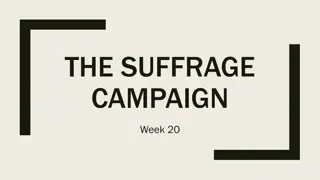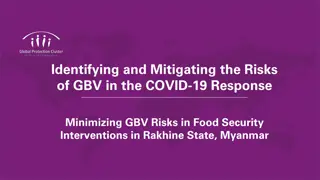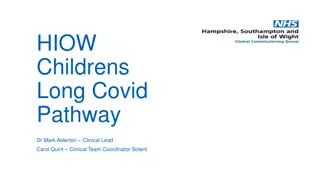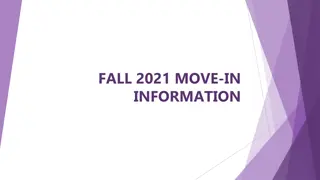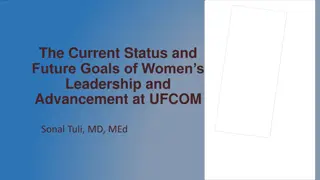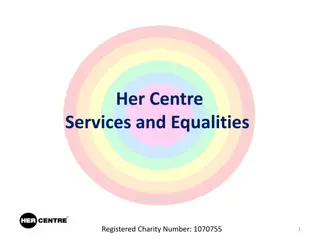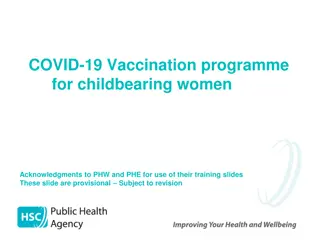Understanding Protection Risks for Women and Children on the Move Amidst COVID-19
This webinar delves into the impact of COVID-19 on protection risks faced by women and children who are on the move. It covers issues such as increased risks of sexual violence, exploitation, and abuse, as well as the necessity of responding to their protection needs during the pandemic. The session examines the challenges faced by millions of displaced children globally, highlighting key statistics and the urgent need for proper facilities and resources in host countries like Uganda.
Download Presentation

Please find below an Image/Link to download the presentation.
The content on the website is provided AS IS for your information and personal use only. It may not be sold, licensed, or shared on other websites without obtaining consent from the author. Download presentation by click this link. If you encounter any issues during the download, it is possible that the publisher has removed the file from their server.
E N D
Presentation Transcript
Webinar 14: Impact of COVID-19 on protection risks for women and children on the move Webinar Training 16 March, 2021
Overall aim of this webinar: To identify the potential protection risks faced by women and children on the move in the context of COVID To understand better issues to consider in responding to women and children on the move in the context of COVID-19 Welcome and introduction Key principles informing the session Useful for here and now but also forward looking Informed by global guidance and child rights instruments Contextualized and fit for purpose (i.e., practical) Strengths- based Participatory
Outline of Session Session 1: Welcome and Introduction Session 2: Overview: Women and chldren on the move Session 3: How does COVID-19 impact protection issues for women and girls on the move: Increased protection risks (sexual violence, exploitation and abuse) Session 4: Responding to the protection needs of women and children on the move in the context of COVID-19
2. Overview: Women and Children on the Move
2019: 33 million children were living outside of their country of birth, including many who were forcibly displaced across borders. 2018: a total of over 31 million children were living in forced displacement in their own country or abroad due to violence and conflict. This includes some 13 million child refugees, around 1 million asylum-seeking children, and an estimated 17 million children displaced within their own countries. 2018: 3.7 million children live in refugee camps or collective centres 52% of migrant children and over 90% of displaced children live in low- and middle-income countries - migrant and displaced children often live in deprived urban areas or slums, overcrowded camps, settlements, makeshift shelters or reception centres, where they lack adequate access to health services, clean water and sanitation Somalia, Ethiopia and the Sudan showed that almost 4 in 10 children and young people on the move do not have access to facilities to properly wash themselves Children on the Move - Globally
Uganda hosts largest refugee population in Africa with 1,450,317 refugees & asylum seekers (UNHCR: 31.01.2021) Approximately 900,000 are children Hosted in 30 settlements in 12 districts: Yumbe (16.1%), Adjumani (14.9%)Madi Okollo & Terego (13.1%), Isingiro (10%), Kikuube (8.6%), Kyegeegwa (8.5%), Obongi (8.4%), Kamwenge (5.2%), Kiryandongo (4.9%), Lamwo (3.8%), Koboko (0.4%), Kampala 88,829 (6.1%) Main country of origin: South Sudan (890,854= 61.4%) , DRC (29.2%), Burundi (3.4%) and Somali (3.1%), Rwanda (1.2%), Eritrea (1.1%) Women and Children on the Move: Uganda
Session 3. How does COVID-19 impact protection issues for women and girls on the move?
Immediate impact Overcrowding social distancing, Shortage of access to essential services: water, sanitaton and hygience facilities Access to health care limited Missing out on accurate public health information around COVID-19 prevention and care language barriers, messages tailored to them Undocumented no contact with public authorities Xenophobia and discrimination due to misinformation Closed borders and restricted travel disrupted the humanitarian supply chain and relief workers ability to assist displaced communities - vital assistance such as food distributions and other basic medical supplies UN agencies were forced to suspend resettlement procedures Border closures have left migrants stranded, placing children and their families at risk of further harm and potentially separating families
Impact on Women Particularly exposed to a number of impacts of the pandemic Gender norms: carry the majority of the burden of both paid and unpaid domestic and care work, which is exacerbated by the quarantines. Taking care of sick family members, including those who cannot access formal healthcare duties that will not only increase their unpaid care labor, but also increase their exposure to the virus Healthcare resources directed at women and girls are at risk of being diverted towards addressing the pandemic. Challenges in accessing menstrual hygiene products and sexual and reproductive health services, and ANC health services will exacerbate existing reproductive health risks (e.g. pregnancy and childbirth complications Women are concentrated in the low-wage and informal sector jobs that are highly prone to disruption. Women are also over-represented in the hospitality (hotels, restaurants), retail and service industries that have been among the hardest hit by the response to COVID-19
At heightened risk of gender-based violence, in particular intimate partner violence exacerbated by confinement and lockdown measures Risk of sexual harassment and exploitation in light of their often-crowded living and unsafe working conditions are also increasing Studies of past disease outbreaks and other humanitarian crisis have shown that without targeted intervention, COVID-19 will heighten pre-existing risks of GBV against women and girls, stymie their social, economic and educational development and threaten their sexual reproductive health There is well established evidence that economic insecurity can lead to sharp rises in intimate partner violence and exposure of women and adolescent girls to sexual exploitation, harassment and other types of gender-based violence Often face barriers in reaching out to police, justice or gender- based violence (GBV) services, particularly when they are undocumented, for fear of retaliation, stigma, detention and possible deportation Impact on Women
Impact on children and their families Refugee children already have fewer education opportunities, school closure increased impact Economic downturns typically lead to more children working, getting pregnant or married, and being trafficked or sexually exploited Lockdowns, income loss, and confinement to small places increase threats to the safety and well-being of children including mistreatment, gender-based violence, exploitation, social exclusion and separation from caregivers Children from migrant and displaced families will be less likely to have extended family nearby to turn to for help, leaving many to fend for themselves. Not reached by virtual case management efforts
Child Protection Risks in Emergencies Child Protection Risks in Emergencies Separation of children from family: Separated may be due to death, disability or illness, or for quarantine. Children may be placed in care, including in residential institutions. Psychological distress: Children may fear getting sick and may fear health workers wearing personal protective gear; isolation due to school and community closures or quarantine. Violence: Containment measures can lead to tensions between caregivers and children, as well as between adult members of the family, resulting in increased risk of violence at home. Child Labor: Loss of household income due to death or illness of caregiver increases the risk of child labor and sexual exploitation/transactional sex. Neglect: Children may not receive consistent levels of social and/or cognitive stimulation due to closure of school and other facilities.
Unaccompanied or separated children Loss of parent/caregiver due to disease, isolation, household economic distress or increased violence can result in: Separation from caregiver due to illness or death Separation of child, including placement in Charitable Children s Institution or quarantine Removal of child from home due to violence Child forced to street
Secondary separations registered in Arua, Kyaka, Rwamwanj Respondent reported an increase in children working outside their household since the lockdown the main driver of child labour was identified as the deteriorated acces to basic needs including food and sanitary materials, as well as coercion and lack of routine Different risks for boys and girls Overall increased vulenrability and lack of support services Findings show that child protection needs to be at the heart of the COVID-19 response in Uganda Save the Children UGANDA Survey June 2020
SC Uganda Survey child protection risks in areas with humanitarian response
SC Uganda Survey child protection risks boys boys
SC Uganda Survey child protection risks girls girls
Dimensions of risks for children and young people Exacerbating pre-existing vulnerabilities and lack of access to services Impact on poverty, survival and health, learning and safety Migrant and displaced children often live in families that are more vulnerable to job loss or economic downturns. Migrant families and children are less likely to be included in economic recovery initiatives, which are mainly aimed at the formal sectors and nationals Migrant and displaced children face additional psychological harms, such as pre-existing psychological trauma; marginalization and stigma from host communities; less recreational material to offset boredom caused by lockdowns and school closures; and poor access to psychosocial support, which is already under- resourced among this group Migrant and displaced youth, especially those moving irregularly are at heightened risk of being stigmatized, discriminated against, or becoming targets of violence.
Important to note: While so far there has still been no large large-scale outbreak in the approximately 100 refugee camps and settlements in the region, 4.6 million refugees and their host communities remain at risk, as do some 8.1 million IDPs. Governments have put in place various measures to contain the spread of the virus and are periodically announcing changes to movement and other restrictions, and gradually lifting preventive measures initially adopted.
Responding to protection needs of women and children on the move in the context of COVID-19 Session 4 This Photo by Unknown Author is licensed under CC BY-NC-ND
General Principles of Response Identifying especially vulnerable women and children during different phases their invisibility is greater than usual Think about the specific risks related to gender inequality or other forms of stigma - advocate proactively against xenophobia, stigma, and discrimination ( the virus does not discriminate, and neither should we ) Prioritizing identification and response as and when you are able to start direct case work Ongoing close liaison with police and magistrates to avoid criminalizing of especially vulnerable children Use COVID-19 as an opportunity to construct amore equal, inclusive and sustainable society where women, children and families are more resilient in the face of pandemics, stigma and other challenges
Uganda Refugee Focused Prevention and Control Plan for COVID-19 Launched in March, 2020 Suspended the receiving of new refugees across border for period of 30 days on March 25, 2020 Transit centers decongested, and de-crowding of settlements No movements in between settlements, or across borders Schools in settlements closed Information on COVID-19, hand washing facilities
Support for refugee and migrant women and children and communities In settlements/camps Work with existing health and humanitarian services: provide handwashing stations and information about how to prevent COVID-19 in all essential languages Ensure continued access to shelter, food and safe space Coordinate closely with education, health, police to understand protection and child protection risks and refer For children on the move / non-registered children and families Prioritize identification of the most vulnerable and ensure access to COVID-19 information in accessible language Monitor and ensure access to essential services, e.g. health, and address any issues of stigma or discrimination
Include migrant, refugee and displaced women and children in preparedness, respnse and mitigation efforts for COVID-19 where are they? Are they separated/unaccompanied? What are their challenges? How are COVID-19 response measurs affecting womena nd men, girls and boys differently? Advocate proactively for ALL children - against xenophobia, stigma and discrimination the virus does not discriminate, and neither should we Provide accessible, timely, culturally and linguistically appropriate, child-friendly and relevant information on COVID- 19 to children and families on the move: use their preferred channels of information and sources they trust (peer migrants, refugee networks, diaspora groups, volunteers, frontline workers). Ensure to account for gender differences in how information is accessed, disseminated and trusted. Consider cultural barriers and disabilities Supporting response to to COVID-19 among refugee population
Supporting response to to COVID-19 among refugee population Ensure universal access to COVID-19 testing, health care, mental health and psychosocial support, and other essential services, for all those who need them, regardless of status. Integrate and invest more resources into MHPSS for migrant and displaced women, children and their families, wherever possible. The COVID-19 crisis piles onto existing uncertainties and distress, may prolong family separation, lead to the loss of family members, and maintenance of precarious conditions, so MHPSS services will become even more crucial for women, children and families coping and resilience Ensure access to clean water, basic toilets and good hygiene practices for migrant and displaced women, children and families when transiting or for those living in camps and in urban areas Implement education strategies for continued learning for all children including migrant and displaced children and make schools safe, healthy, and inclusive environments
Every childs right to seek asylum, protection or to reunite with family members should never be compromised because of public health considerations. States can and must protect both public health and access to asylum. States should immediately stop push-backs and deportations of children, especially if they are unaccompanied or separated Supporting response to to COVID-19 among refugee population
Chat box What practical actions can you identify to support vulnerable women and children on the move in the context of COVID-19?
Resources Refugee and migrant children, children on the move https://www.unicef.org/media/68761/file Quick tips on COVID-19 and Migrant, Refugee and Internally Displaced Children (Children on the Move) https://alliancecpha.org/en/system/tdf/library/attachments/quick_tips_on_covid- 19_and_migrant_refugee_and_internally_displaced_children.pdf?file=1&type=node&id=37669 United Nations, The Impact of COVID-19 on Children , Policy brief, 15 April 2020. Available at https://unsdg.un.org/sites/ default/files/2020-04/160420_Covid_Children_Policy_Brief. Pdf United Nations Children s Fund, Children on the Move in East Africa: Research insights to mitigate COVID-19 , 31 March 2020. Available at https://blogs.unicef.org/ evidence-for-action/children-on-the-move-in-east-africa- research-insights-to-mitigate-covid-19/ People on the Move: https://www.globalprotectioncluster.org/wp- content/uploads/sg_policy_brief_on_people_on_the_move.pdf
Tea break! Tea break! The zoom meeting will remain open for 20 minutes for anyone who wants an optional social catch up
